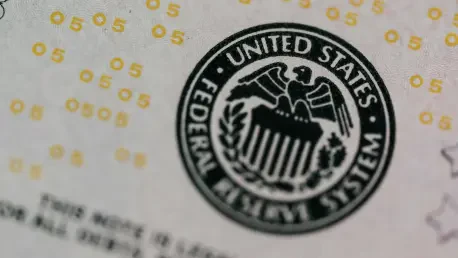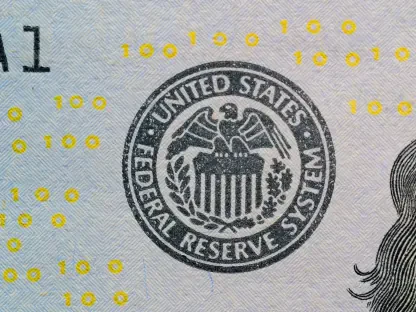The dynamics between former President Donald Trump and Federal Reserve Chairman Jerome Powell continue to unfold as America grapples with sluggish job growth and economic uncertainty. Trump remains vocally critical of Powell’s cautious approach to monetary policy, particularly when it comes to adjusting interest rates to align with the economic challenges at hand. Recently, ADP employment data revealed that private payrolls rose by 37,000 in May, a stark contrast to the anticipated 110,000 jobs. This discrepancy has provided Trump with fresh ammunition to press the Federal Reserve for interest rate cuts, positioning this issue at the heart of an ongoing debate over how best to foster economic stability and growth.
Tensions over Monetary Policy
Trump’s Critique of “Too Late Powell”
Donald Trump’s dissatisfaction with Jerome Powell’s handling of interest rates is well documented, with Trump calling Powell “Too Late Powell” amid accusations of Fed inaction during critical economic periods. Trump argues that lowering interest rates would spur quicker economic recovery, particularly when indicators show weak performance. He believes that slower job growth, as evidenced by the recent ADP figures, necessitates immediate intervention to bolster the economy through reduced borrowing costs. Nevertheless, Powell and numerous economists contend that precipitous adjustments to interest rates may not be justified under current conditions due to inflationary pressures partly fueled by trade tariffs.
The ADP employment data, highlighting a significant shortfall in expected job growth, amplifies Trump’s demand for immediate action. Yet, the Federal Reserve under Powell is in no rush to change course, suggesting that interest rates must remain at their present levels to manage inflation effectively. Economic experts support Powell’s cautious stance, pointing out that rate cuts could inadvertently exacerbate inflation rather than stimulate sustainable growth. Trump’s aggressive rhetorical approach nevertheless aims to sway public opinion and heighten scrutiny of the Fed’s decisions, reflecting broader tensions in economic governance and policy formulation during politically charged times.
Economists’ Perspective on Rate Cuts
Most economists advocate for a tempered approach, emphasizing that interest rate decisions should be grounded in comprehensive analyses rather than reactionary measures. They argue that while Trump’s push for rate cuts could generate short-term economic activity, such actions might undermine long-term stability if not carefully calibrated. Inflation remains a formidable concern, with tariffs on international trade contributing to inflationary pressure and complicating the economic outlook. Powell has communicated that maintaining relatively higher interest rates may be necessary to counteract volatility and supply chain disruptions impacting price levels.
This divide in economic philosophies underscores the complex nature of navigating monetary policy when political figures advocate for swift solutions. While Trump leverages employment data to support his call for rate reductions, others argue that economic soundness requires deliberate and balanced decisions, which often mean resisting hastily made changes. The ongoing dialogue between Trump’s demands and economists’ caution highlights the challenges in balancing immediate economic stimuli with the overarching goal of sustained growth, stability, and inflation control.
Balancing Immediate Action with Long-Term Strategy
Federal Reserve’s Approach to Economic Policy
The Federal Reserve, historically known for its prudent and measured approach, faces significant pressure due to political and public expectations. Unlike Trump’s preference for expedient solutions, the Fed’s strategy prioritizes stable and sustained economic progress. The essence of this strategy is to ensure that economic growth does not compromise long-term financial stability. Powell and the Federal Reserve Board’s decisions are informed by comprehensive analyses of multifaceted economic data, compelling them to weigh immediate signals against larger, less volatile patterns in the economy.
Powell’s resolve to maintain higher interest rates reflects this broader strategic perspective. His approach considers not only immediate unemployment figures or payroll data but also factors like inflationary pressures and potential supply-side shocks, which might necessitate more conservative monetary policy actions. This balancing act involves navigating short-term political pressures while concentrating on the Fed’s dual mandate: maximizing employment and stabilizing prices. Trump’s continued critique highlights inherent challenges in this balancing act, illustrating the tension between political imperatives and central bank responsibilities.
The Complexity of Economic Governance
The relentless clash over interest rates and monetary policy between Trump and Powell underscores the broader complexities of economic governance in a dynamic political and economic environment. As Trump persistently champions for monetary easing, these demands must be weighed against the systemic risks and benefits of such actions. Economists and financial analysts caution against the perceived haste of Trump’s proposals, urging for adherence to the Federal Reserve’s methodological and historically informed protocols. This ongoing debate provides a window into the friction present in an environment where policymaking must accommodate both immediate signals and far-reaching strategic considerations.
As the United States navigates these uncertain economic landscapes, the case surrounding interest rates becomes emblematic of the broader struggle to define effective governance models. The discussion between Trump and Powell reflects deeper questions about the roles and responsibilities of government and financial institutions in times of economic strain. Ultimately, strategic monetary policy decisions must balance the sometimes conflicting demands of growth, stability, and inflation control in the context of political influence and dynamic market conditions.
Moving Forward: Implications and Future Considerations
The interplay between former President Donald Trump and Federal Reserve Chairman Jerome Powell remains a point of interest as the U.S. faces sluggish job growth and economic uncertainty. Trump has consistently been outspoken about his dissatisfaction with Powell’s cautious monetary policy approach, especially regarding the adjustment of interest rates in response to existing economic challenges. Recently, ADP’s employment data illustrated a significant shortfall with private payrolls increasing by only 37,000 in May, compared to the projected 110,000 jobs. This disparity has given Trump new grounds to criticize and urge the Federal Reserve toward cutting interest rates, making this a central topic in the broader debate about the best methods to achieve economic stability and stimulate growth. The discussion is part of a larger conversation about how governmental and fiscal policies can adapt to evolving economic landscapes while addressing existing challenges and opportunities within the labor market.









